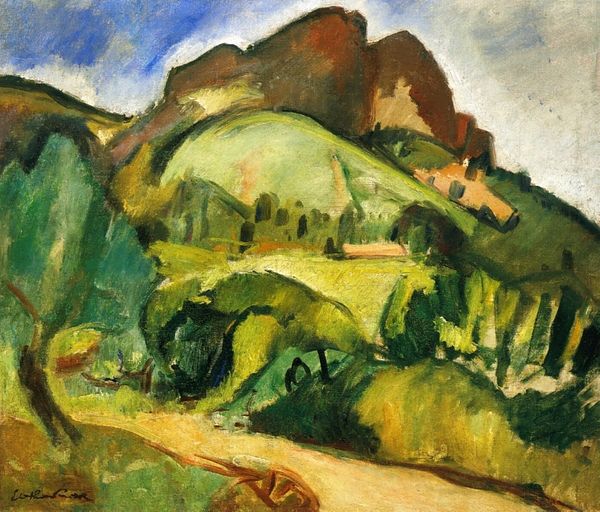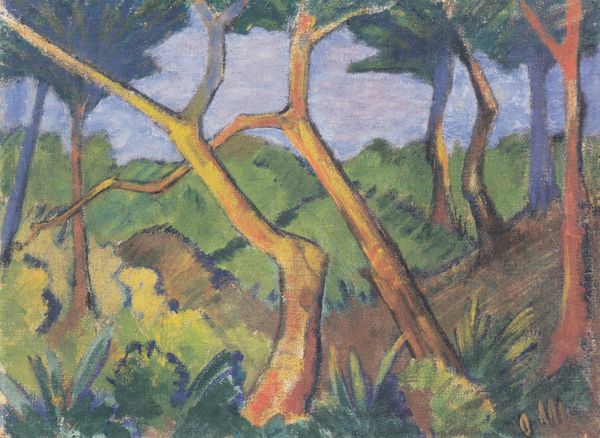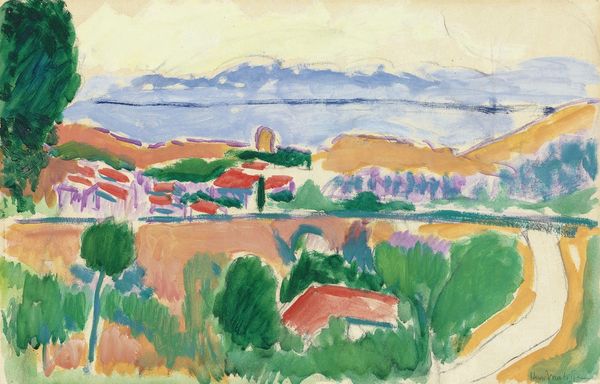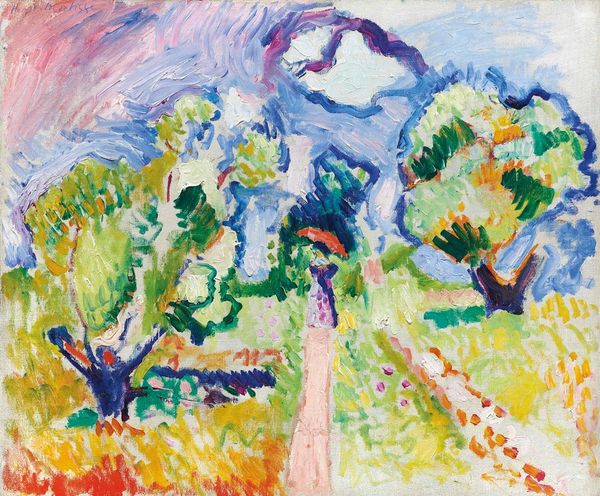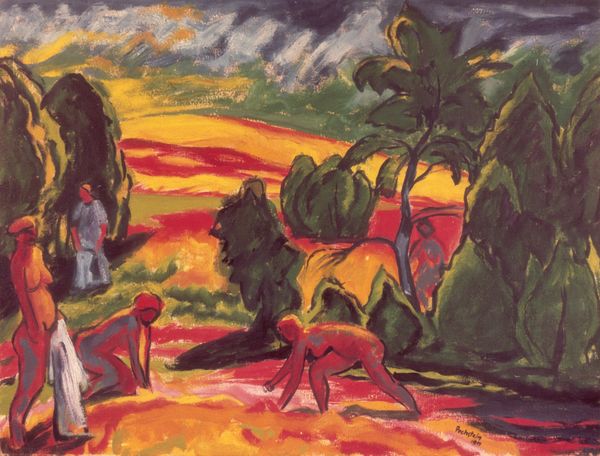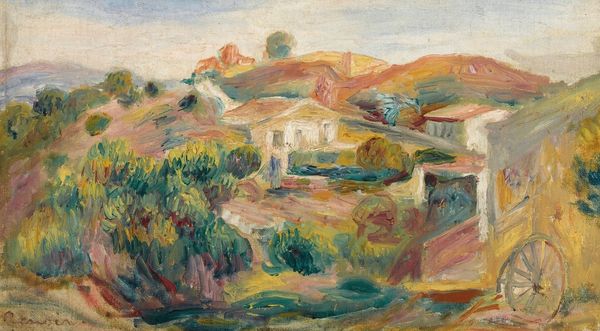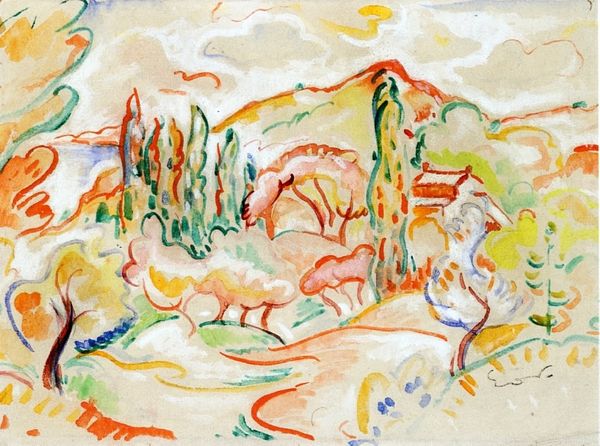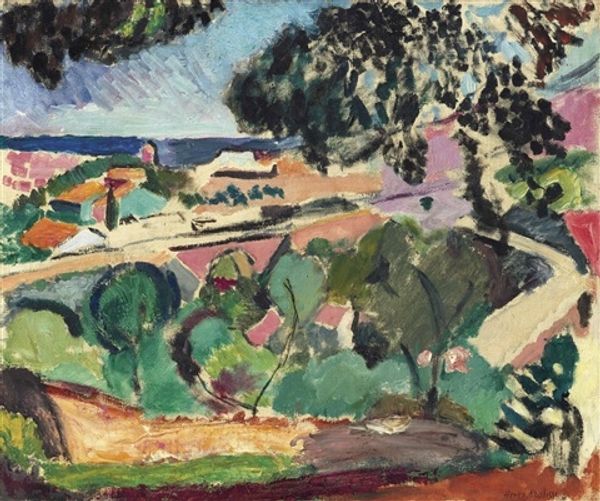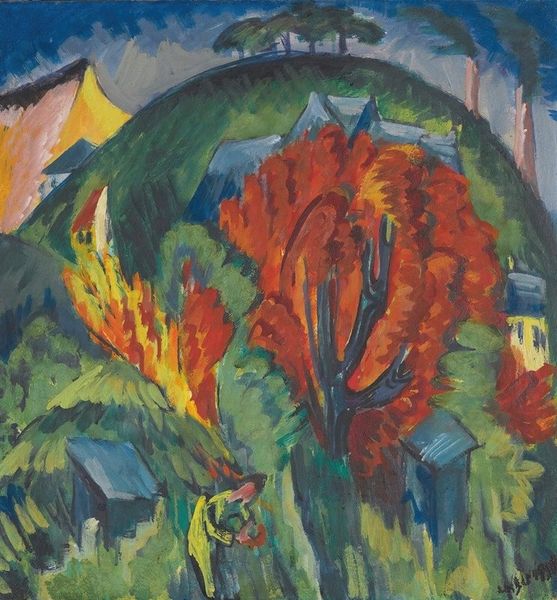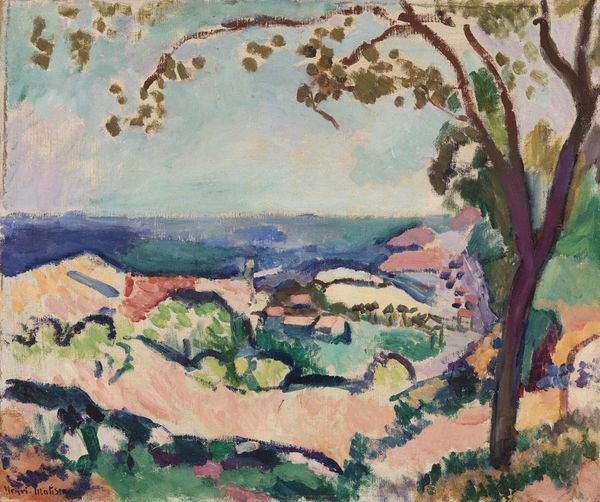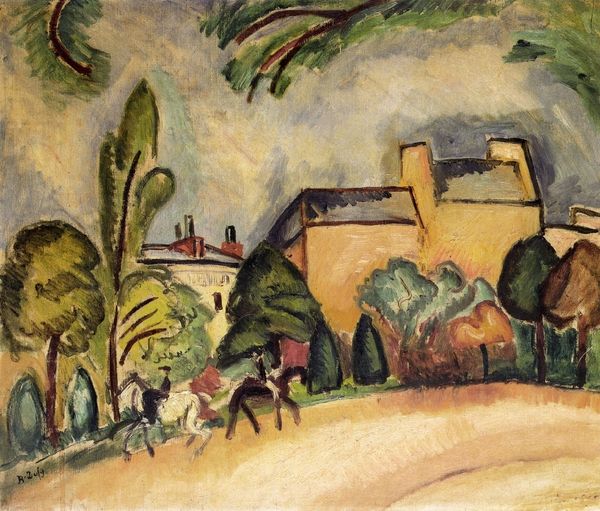
Copyright: Public Domain: Artvee
Curator: My initial response to this canvas is almost visceral; there’s something fundamentally off-kilter. Editor: You're reacting to Ernst Ludwig Kirchner’s “Bergdorf mit rosa Kuh”, or “Mountain Village with Pink Cow”, painted in 1919. As the title suggests, Kirchner's subject matter includes a village nestled within an abstract rendering of a mountainous landscape. Curator: Abstract indeed. The bright hues are strangely muted, the application thick, impasto-like... But, that pink cow! It feels so surreal. Like an uncanny symbol imposed on the otherwise bucolic scene. Editor: I would agree with the strange sense about it. It is expressionist in style and therefore attempts to communicate emotional experience more than to render objective reality. Note, for instance, how the perspective is skewed, and the colour choices, though bright, lack a naturalistic tone. This wasn't unusual in the art coming from post World War I Germany. There were plenty of societal dislocations at that time that may have bled into the artistic scene. Curator: Exactly. Look at those buildings—they huddle together, seemingly seeking safety but also appearing as if they are being pulled apart. The cow—such a traditional symbol of pastoral serenity and abundance—rendered in pink feels mocking. It is as though he takes the familiar signifier and turns it into a harbinger of some unspoken disruption. What could the symbolic importance of the pink cow possibly be? Editor: Well, if you want to see the cow as an idol that's imposed in the small and helpless mountain village, then I might want to ask, is the village the population of Germany? And what could the artist feel that's threatening their future in the aftermath of war? One thing to bear in mind is that the artist made frequent uses of this shade of pink, so perhaps there is an aspect here to it that has something to do with Kirchner's unique artistic and aesthetic expression? It's tough to tell! Curator: Perhaps you're right. It's important to remember the artwork's time, a moment of profound social upheaval in Germany, reflected perfectly in the broken visual language of the Expressionists, Kirchner included. His choice of bold, clashing colours may mirror the jarring dissonance of the era. Editor: So it seems what begins with disquiet eventually yields some appreciation for its context. The initial off-kilter feeling ultimately connects us to a wider and unsettling narrative of a very challenging time.
Comments
No comments
Be the first to comment and join the conversation on the ultimate creative platform.
